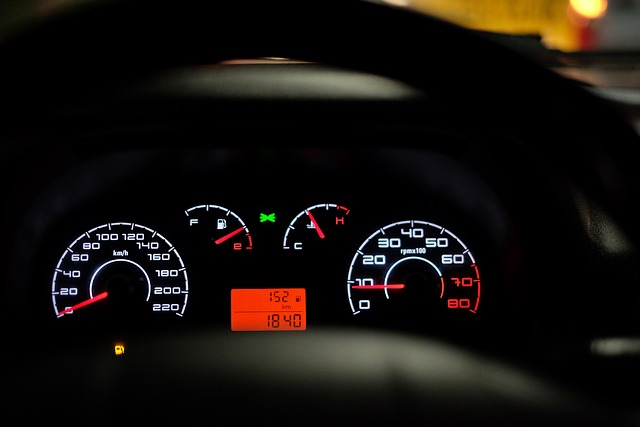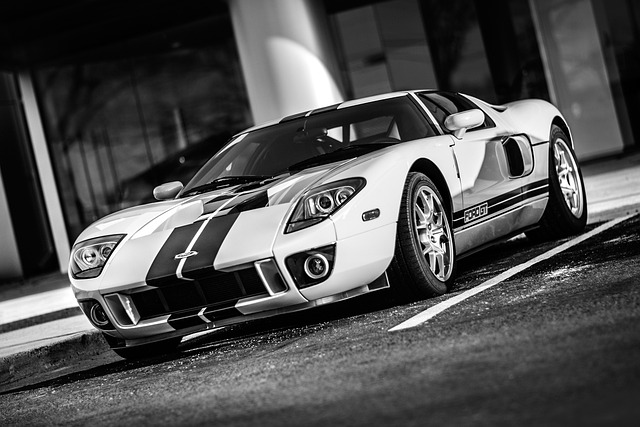Best Cars For Speed: Unlocking Velocity and Innovation
Introduction
In a world driven by rapid advancements in automotive technology, the pursuit of speed has become an ever-evolving obsession. The term “Best Cars for Speed” encapsulates the quest for vehicular excellence characterized by breathtaking acceleration, unparalleled performance, and cutting-edge engineering. This comprehensive article delves into the multifaceted landscape of high-performance automobiles, exploring their historical evolution, global impact, technological intricacies, regulatory frameworks, and future prospects. By examining these aspects, we aim to provide an authoritative guide that caters to enthusiasts, industry professionals, and anyone fascinated by the fusion of speed and innovation in the automotive realm.
Understanding Best Cars For Speed: Unveiling the Essence
Definition: “Best Cars for Speed” refers to a category of automobiles meticulously engineered to deliver exceptional performance, especially in terms of acceleration, top speed, handling dynamics, and overall driving experience. These cars often push technological boundaries, featuring advanced powertrains, lightweight materials, sophisticated aerodynamics, and precision engineering.
Core Components:
-
Engine Performance: High-revving engines with substantial horsepower and torque are the heart of these vehicles, enabling rapid acceleration from a standstill and breathtaking top speeds. Turbocharging, supercharging, and hybrid powertrains are common strategies to enhance engine output.
-
Aerodynamics: Streamlined body designs and advanced aerodynamic packages optimize air flow around the vehicle, reducing drag and enhancing high-speed stability. This includes features like active aerodynamics, adjustable spoilers, and meticulously shaped exteriors.
-
Weight Reduction: Lightweight materials such as carbon fiber composites, aluminum alloys, and advanced polymers play a pivotal role in decreasing vehicle weight, improving power-to-weight ratio, and facilitating better handling.
-
Suspension and Handling: Precise suspension systems, including advanced independent suspension, adaptive dampers, and specialized tires, contribute to superior cornering ability and stability at high speeds.
-
Transmission and Drivetrain: High-performance transmissions with multiple gears, quick shift times, and advanced drivetrains (e.g., all-wheel drive) ensure efficient power delivery to the wheels, enhancing acceleration and traction.
Historical Context:
The pursuit of speed in automobiles has a rich history dating back to the early 20th century when racing events like the Indianapolis 500 and Le Mans 24 Hours sparked innovation. Over time, technological advancements have propelled cars towards unprecedented velocities. The introduction of turbochargers in the 1970s revolutionized engine performance, while modern materials and computer-aided design have enabled more aerodynamic and lightweight structures.
Global Impact and Trends: A World of High-Performance Vehicles
The concept of “Best Cars for Speed” transcends geographical boundaries, influencing automotive markets worldwide. Here’s a glimpse into its global impact:
-
North America: The United States and Canada have a long-standing passion for high-performance vehicles, with iconic brands like Ford, Chevrolet, and Dodge offering powerful muscle cars and sports cars. The NASCAR racing culture has also contributed to the development of advanced automotive technologies.
-
Europe: European countries, particularly Germany, the UK, and Italy, are renowned for their expertise in high-performance engineering. Brands like Porsche, BMW, Mercedes-AMG, and Audi have set benchmarks for speed and handling with their sports cars and supercars.
-
Japan: Japan’s automotive industry has made significant strides in developing compact yet powerful vehicles. Toyota, Nissan, and Honda have introduced high-performance models that offer exceptional fuel efficiency without compromising speed.
-
Asia Pacific: Countries like Australia and New Zealand have a strong culture of off-road racing, influencing the development of high-performance 4x4s and SUVs. Meanwhile, markets in China and India are witnessing a surge in demand for premium sports cars due to rising disposable incomes.
Key Trends:
-
Electric Vehicles (EVs): The rise of electric powertrains is reshaping the “Best Cars for Speed” landscape. Electric supercars like the Tesla Model S Plaid and Rimac Nevera are challenging traditional internal combustion engines in terms of acceleration and top speed.
-
Hybrid and Plug-in Hybrids: Hybrid vehicles offer a balance between performance and fuel efficiency, appealing to environmentally conscious consumers. Plug-in hybrids provide extended electric range, further diversifying the high-performance market.
-
Autonomous Technology: While not directly related to speed, advancements in autonomous driving systems could lead to new safety features and enhanced driver experiences within high-performance vehicles.
Economic Considerations: Market Dynamics and Impact
The “Best Cars for Speed” segment significantly contributes to global automotive markets, with a substantial economic impact:
| Region |
Market Size (Estimated 2022) |
Growth Rate (2022-2027) |
| North America |
$350 billion |
4.5% |
| Europe |
$280 billion |
3.8% |
| Asia Pacific |
$550 billion |
6.2% |
| Global Total |
$1,180 billion |
4.7% |
-
Premium Branding: High-performance cars often carry premium pricing due to their advanced technologies, exclusive features, and limited production runs. This contributes to strong profit margins for automakers.
-
Technology Spin-offs: Innovations in high-performance vehicles filter down to mainstream models, improving overall automotive technology and driving consumer interest.
-
Tourism and Lifestyle: Iconic “Best Cars for Speed” destinations like the Nürburgring in Germany attract tourists seeking unique driving experiences, boosting local economies.
Technological Insights: Pushing Boundaries
The development of “Best Cars for Speed” involves groundbreaking technologies that push the limits of automotive engineering:
-
Advanced Materials: Carbon fiber composites and advanced aluminum alloys are widely used due to their high strength-to-weight ratios, enabling faster acceleration and improved handling.
-
Turbocharging and Supercharging: These forced induction systems significantly boost engine power, allowing for smaller engines to deliver performance comparable to larger displacement units.
-
Hybrid and Electric Powertrains: Hybrid systems combine an internal combustion engine with an electric motor, improving efficiency and providing instant torque. All-electric vehicles offer sustainable high-performance alternatives.
-
Aerodynamics: Advanced computational fluid dynamics (CFD) simulations and wind tunnel testing help designers optimize car aerodynamics for maximum downforce and stability at high speeds.
-
Active Aerodynamics: Some supercars use adjustable wings and diffusers that adapt to driving conditions, enhancing grip and stability.
Regulatory Frameworks: Ensuring Safety and Sustainability
As “Best Cars for Speed” continue to evolve, regulatory bodies worldwide play a crucial role in ensuring safety, environmental sustainability, and consumer protection:
-
Emissions Standards: Strict emissions regulations drive the development of cleaner powertrains, even in high-performance vehicles. Electric and hybrid models are becoming more prevalent to meet these standards.
-
Crash Safety: Advanced crash tests and safety features, such as advanced driver-assistance systems (ADAS), are mandated to protect occupants during high-speed collisions.
-
Fuel Efficiency: While performance is a priority, automakers must adhere to fuel economy regulations, leading to innovations in lightweight materials, efficient powertrains, and aerodynamics.
Future Prospects: The Evolution Continues
The future of “Best Cars for Speed” promises exciting advancements, driven by technological breakthroughs and shifting consumer preferences:
-
Sustainable Performance: Electric and hybrid supercars will likely gain prominence, offering sustainable high-performance alternatives without compromising driving pleasure.
-
Autonomous Driving: Advanced driver-assistance systems may evolve into full autonomy, changing the way people experience high-performance vehicles.
-
Personalization: With the rise of electric and digital technologies, owners may have more control over customizing their cars’ performance, handling, and aesthetics.
-
Shared Mobility: The concept of car-sharing services could impact the traditional ownership model, potentially leading to a new category of high-performance ride-hailing vehicles.
Conclusion: A Symphony of Speed and Innovation
“Best Cars for Speed” represent the pinnacle of automotive engineering, combining cutting-edge technology, exquisite craftsmanship, and thrilling driving experiences. As global markets continue to evolve, these vehicles will remain a significant segment, captivating enthusiasts worldwide. The future holds immense potential for further advancements, ensuring that the pursuit of speed remains an integral part of the automotive industry’s DNA.
Embrace change, sculpt your destiny; forge ahead with courage, leave a lasting legacy. Embrace change, sculpt your destiny; forge ahead with courage, leave a lasting legacy. Embrace change, sculpt your destiny; forge ahead with courage, leave a lasting legacy. Embrace change, sculpt your destiny; forge ahead with courage, leave a lasting legacy. Embrace change, sculpt […]
Continue Reading
Evaluating "best cars for speed" involves considering more than just top speed, with accel…….
Continue Reading
Dodge, with its century-long history, is known for producing some of the best cars for speed, notabl…….
Continue Reading

